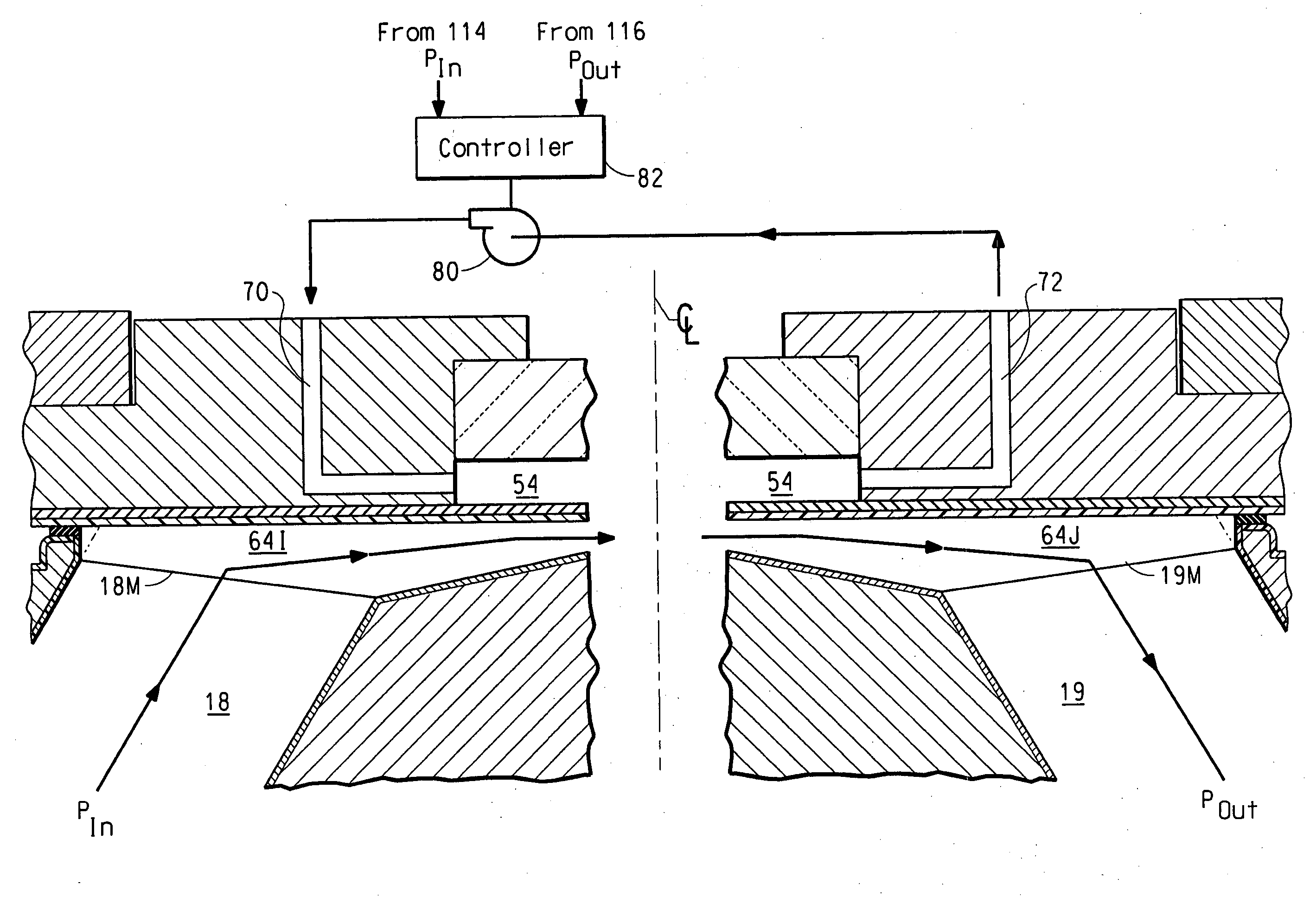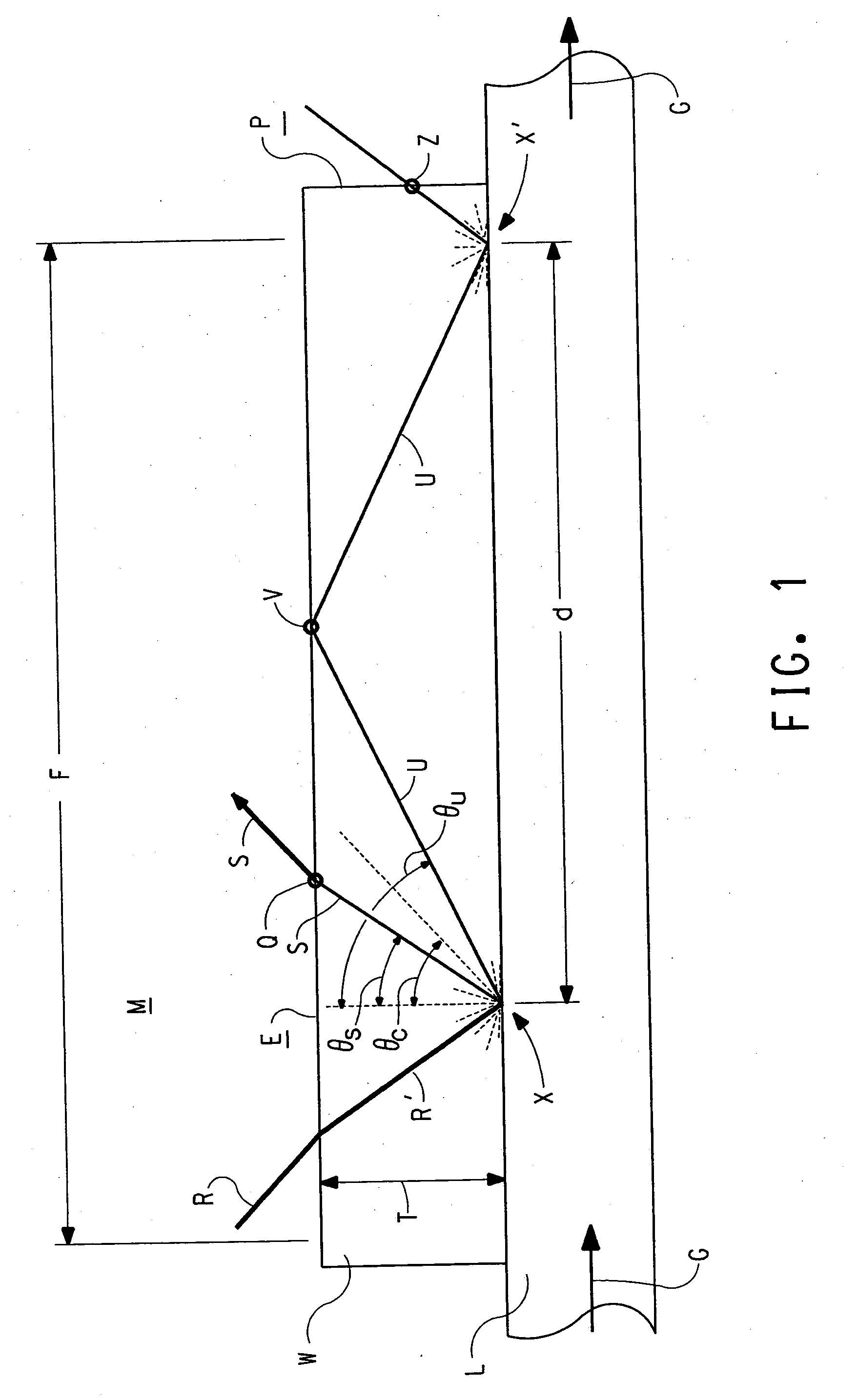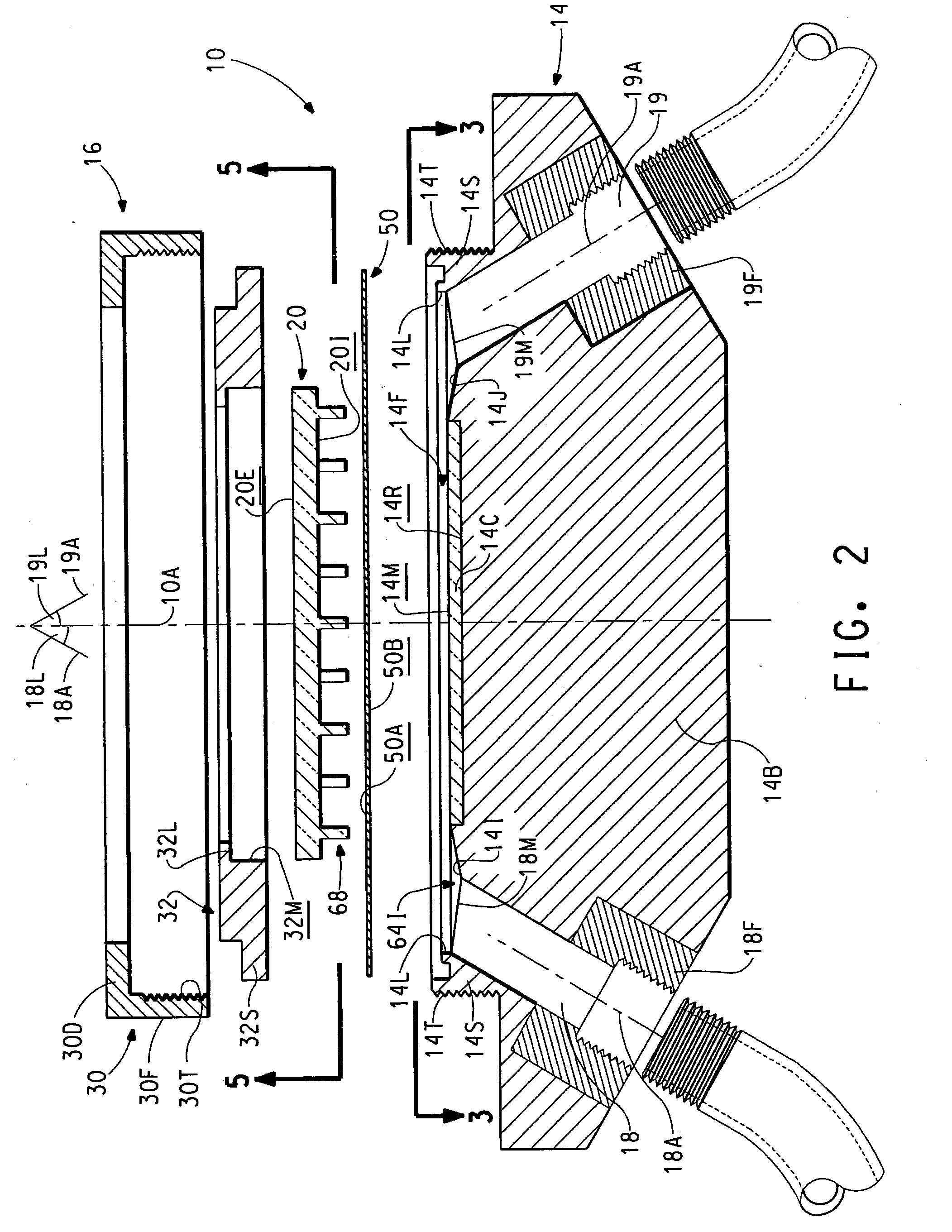System for measuring a color property of a liquid
a liquid color and flow cell technology, applied in the field of flow cells for measuring the color properties of liquids, can solve the problems of inability to achieve the goal, and inability to meet the measurement requirements, so as to achieve the effect of reducing the disruption of ligh
- Summary
- Abstract
- Description
- Claims
- Application Information
AI Technical Summary
Benefits of technology
Problems solved by technology
Method used
Image
Examples
example
[0170] The prevention in light disruption and the corresponding improvements in chroma and in color sensitivity afforded by a flow cell in accordance with the present invention may be understood from the following Example.
[0171] Sample 1 was an orange tint available from E.I. du Pont de Nemours and Co., Wilmington Del. as Tint 853J mixed with a suitable amount of white mixing base to give full spectral information. Sample 2 was the same orange tint doped with 0.32% of a desaturating black colorant available from E.I. du Pont de Nemours and Co., Wilmington Delaware as Tint 806J.
[0172] Reflectance versus wavelength measurements for the two liquid samples Sample 1 and Sample 2 were made using each of three instruments, the Reference Instrument, the Prior Art Comparison Instrument, and the Invention Instrument.
[0173] The Reference Instrument was a rotating disc system generally as described in German Patent DE 25 25 701. Liquid Samples 1 and 2 were separately applied using a slotted ...
PUM
| Property | Measurement | Unit |
|---|---|---|
| thickness | aaaaa | aaaaa |
| refractive index | aaaaa | aaaaa |
| interrogating wavelength range | aaaaa | aaaaa |
Abstract
Description
Claims
Application Information
 Login to View More
Login to View More - R&D
- Intellectual Property
- Life Sciences
- Materials
- Tech Scout
- Unparalleled Data Quality
- Higher Quality Content
- 60% Fewer Hallucinations
Browse by: Latest US Patents, China's latest patents, Technical Efficacy Thesaurus, Application Domain, Technology Topic, Popular Technical Reports.
© 2025 PatSnap. All rights reserved.Legal|Privacy policy|Modern Slavery Act Transparency Statement|Sitemap|About US| Contact US: help@patsnap.com



